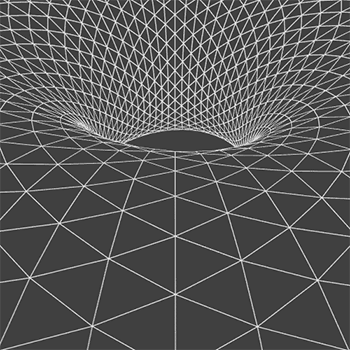# "For a body moving with constant acceleration" \ a, "along a straight line, the equation of motion -- " #
# "the position function" \ s(t), "is given by:" #
# \qquad \qquad \qquad \qquad s(t) \ = \ 1/2 a t^2 + v_0 t + s_ 0, \qquad "where:" \qquad \qquad \qquad \qquad \qquad \qquad \quad \ (I) #
# \quad a = "acceleration," quad v_0 = "initial velocity" quad s_0 = "initial position."#
# "[I don't know if you are allowed to assume this (!!) It is a" #
# "standard result for this type of motion. ]" #
# "At any rate, back to the above equation."#
# "We can take the origin of the straight line to be a location of" #
# "our choice on the line. Taking the point O as the origin, will" #
# "prove to be very nice. Let's also start the clock when the body" #
# "is at point O." #
# "So we have:" #
# \quad "position at time" \ t = 0 \ \ "is:" \quad "point O"; \qquad rArr \quad \ s_0 = 0. #
# \quad "velocity at time" \ t = 0 \ \ "is:" \quad "velocity at point O"; \qquad rArr \quad v_0 = u. #
# "Putting these into our equation of motion in (I), we have:"#
# \qquad \qquad \qquad \qquad \qquad \qquad \qquad \ \ s(t) \ = \ 1/2 a t^2 + v_0 t + s_ 0. #
# \qquad \qquad :. \qquad \qquad \qquad \qquad \ s(t) \ = \ 1/2 a t^2 + u t + 0 #
# \qquad \qquad :. \qquad \qquad \qquad \qquad \ s(t) \ = \ 1/2 a t^2 + u t. \qquad \qquad \qquad \qquad \qquad \qquad \qquad \qquad \quad \ (II) #
# "Now we are given: between 4 s and 5 s, the body traveled 10m." #
# \qquad \qquad :. \qquad \qquad \qquad \qquad \qquad s(5) - s(4) \ = \ 10. \qquad \qquad \qquad \qquad \qquad \qquad \qquad \qquad (III)
#
# "Now we are also given: between 6 s and 7 s, body traveled 12m." #
# \qquad \qquad :. \qquad \qquad \qquad \qquad \qquad s(7) - s(6) \ = \ 12. \qquad \qquad \qquad \qquad \qquad \qquad \qquad \qquad \ (IV)
#
# "Using the equation of motion from (II), eqn. (III) becomes:" #
# \qquad \qquad :. \qquad \ [ 1/2 a (5)^2 + u (5) ] - [ 1/2 a (4)^2 + u (4) ] \ = \ 10. #
# \qquad \qquad :. \qquad \qquad \quad [ 25/2 a + 5 u ] - [ 16/2 a + 4 u ] \ = \ 10. #
# \qquad \qquad :. \qquad \qquad \qquad \qquad \qquad \qquad \quad 9/2 a + u \ = \ 10.#
# \qquad \qquad :. \qquad \qquad \qquad \qquad \qquad \qquad \ \ 9 a +2 u \ = \ 20. \qquad \qquad \qquad \qquad \qquad \qquad \qquad \qquad \ \ \ (V) #
# "Similarly, using it with eqn. (IV), we have:" #
# \qquad \qquad :. \qquad \ [ 1/2 a (7)^2 + u (7) ] - [ 1/2 a (6)^2 + u (6) ] \ = \ 12. #
# \qquad \qquad :. \qquad \qquad \quad [ 49/2 a + 7 u ] - [ 36/2 a + 6 u ] \ = \ 12. #
# \qquad \qquad :. \qquad \qquad \qquad \qquad \qquad \quad 13/2 a + u \ = \ 12.#
# \qquad \qquad :. \qquad \qquad \qquad \qquad \qquad \ 13 a +2 u \ = \ 24. \qquad \qquad \qquad \qquad \qquad \qquad \qquad \qquad \quad \ \ (VI) #
# "So now we see eqns. (V) and (VI) form a" \ \ 2 xx 2 \ "system of" #
# "linear equations for the desired quantities:" \quad a, u." #
# "So, let's solve these:" #
# \qquad \qquad :. \qquad \qquad \qquad \qquad \qquad \qquad \ \ 9 a +2 u \ = \ 20. #
# \qquad \qquad :. \qquad \qquad \qquad \qquad \qquad \quad \ \ 13 a +2 u \ = \ 24. #
# "(VI)" \ - \ (V):" \qquad \qquad :. \qquad \qquad \ 4 a \ = \ 4. #
# \qquad \qquad \qquad \qquad \qquad \qquad :. \qquad \qquad \qquad \qquad \quad a \ = \ 1. \qquad \qquad \qquad \qquad \qquad \qquad \qquad \qquad \quad \ \ (VII) #
# "Substituting" \ a = 1 \ "into eqn. (V), we get:" #
# \qquad \qquad :. \qquad \qquad \qquad \qquad \qquad \ \ 9 (1) +2 u \ \ = \ 20. #
# \qquad \qquad :. \qquad \qquad \qquad \qquad \qquad \qquad \qquad 9 +2 u \ = \ 20. #
# \qquad \qquad :. \qquad \qquad \qquad \qquad \qquad \qquad \qquad \quad \quad \ \ \ 2 u \ = \ 11. #
# \qquad \qquad :. \qquad \qquad \qquad \qquad \qquad \qquad \ \ \qquad \qquad \quad \ u \ = \ 11/2. \qquad \qquad \qquad \qquad \qquad \qquad \qquad (VII) #
# "And so we have our desired results:" #
# \qquad \qquad \qquad \qquad \qquad a =1 \ \ m/s^2 \qquad \qquad \ "and" \qquad \qquadv = 11/2 \ \ m/s \quad. #
![enter image source here]()


